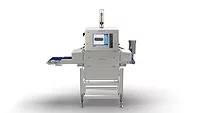New Lateral Flow Reader Provides Traceability, Eliminates Subjectivity
Since the inception of lateral flow device tests, users have appreciated just how easy they are to use. Think you’re pregnant? Wonder if that pitbull has rabies? Worry about your products containing dangerous toxins or pathogens?
Lateral flow tests have offered the easiest way to find out. All you have to do is simply add a few drops of sample, and watch for a test line to appear, or not. Depending on your perspective, the good or bad news appears in only minutes.
“Lateral flow tests have been popular since the early 1960s,” says Neogen’s James Topper. “Their most popular incarnation is as home pregnancy tests, but their use extends to a broad range of human clinical applications. In the food industry, lateral flow devices are used for the detection of contaminants in animal feed, to E. coli O157:H7 in ground beef, to Listeria on food contact surfaces and aflatoxin in corn.”
But two issues have kept some from adopting the lateral flow technology for their food safety testing: 1) Subjectivity of the interpretation of some readings, and 2) manually recording test data. Neogen’s recent introduction of the AccuScan lateral flow reader has solved these issues.
“Food companies were understandably resistant to a technology that at times required the subjectivity of individuals, and lacked a permanent result,” explains Topper. “When a company’s reputation, and financial health, can depend on a test result, they want a definitive and permanent result. The AccuScan reader provides that result.”
Lateral Flow Technology: The Objective Snapshot
While the technology for commercialization of lateral flow devices owes its origins to the immuno-response system in mammals, the technology for reading those devices owes its origin to the computer industry. When images are captured for display or interpretation on a computer, they must be broken down into small points of color called pixels. On a computer screen, these pixels are displayed as dots. Each of these pixels is a particular color that is determined by a combination of red, green and blue (RGB) hues.
A lateral flow device reader, like Neogen’s AccuScan III, takes a digital photograph of the test result. Using intelligent algorithms, the image is analyzed pixel by pixel for each RGB value. Pixels of a certain value and within a certain proximity to the target area are further evaluated and, if the appropriate criteria are met, interpreted as a line. The entire sequence of reading the device and interpretation of the presence of a line takes only seconds.
In addition to the value that the objective reading delivers, an additional lbenefit comes from the fact that the photograph is stored, and can be archived for future reference. This archived image provides documented proof of the state of the reading at the point it was taken. With this approach, questions on why a particular production lot was rejected can be resolved by viewing the photographic proof that can be displayed on the user’s computer.
“One of our customers told us that they had an auditing team come through from a major soft-drink manufacturer recently,” said Neogen’s Topper. “This team had been extremely stringent on documentation and procedures. Our customer showed them the records for their aflatoxin testing that contained detailed references to date, time, user, results and even a picture of the test. The auditors were so confident that our customer was on top of the testing, so they went right to the next item without a second thought.”
Lateral flow tests operate by binding antibodies or some other capture agent, such as microphages, to a detection marker. Most often these markers are either very small pieces of gold, called colloidal gold, or very small plastic beads. When the liquid sample wicks across a series of membranes it encounters the antibody/marker combination. If the antigen of concern is present, like E. coli O157:H7 bacteria, the antibody binds to the bacteria and continues to flow across the membrane until it reaches the test strip region. At this stage it encounters another region of antibody and marker combinations.
A second binding occurs and the weight of the two markers prevents it from flowing any further through the membrane. If enough of the markers are present in the test region, a visible line will appear. It should be noted that some assays use a slightly different approach, called a competitive assay, which actually results in the formation of a line when the antigen is not present. Sometimes the line is dark and obvious and sometimes it’s not. When it’s not, the line can be interpreted differently by different eyes under different lighting conditions. That’s where a reader comes in.
In many ways the lateral flow devic ereader levels the field for small and medium sized companies who do not want to invest large capital outlays for their testing equipment and staff. It allows them to utilize the easy-to-use, fast lateral flow tests with an objective reading that can be archived and retrieved for formal documentation.
www.neogen.com
Looking for quick answers on food safety topics?
Try Ask FSM, our new smart AI search tool.
Ask FSM →







